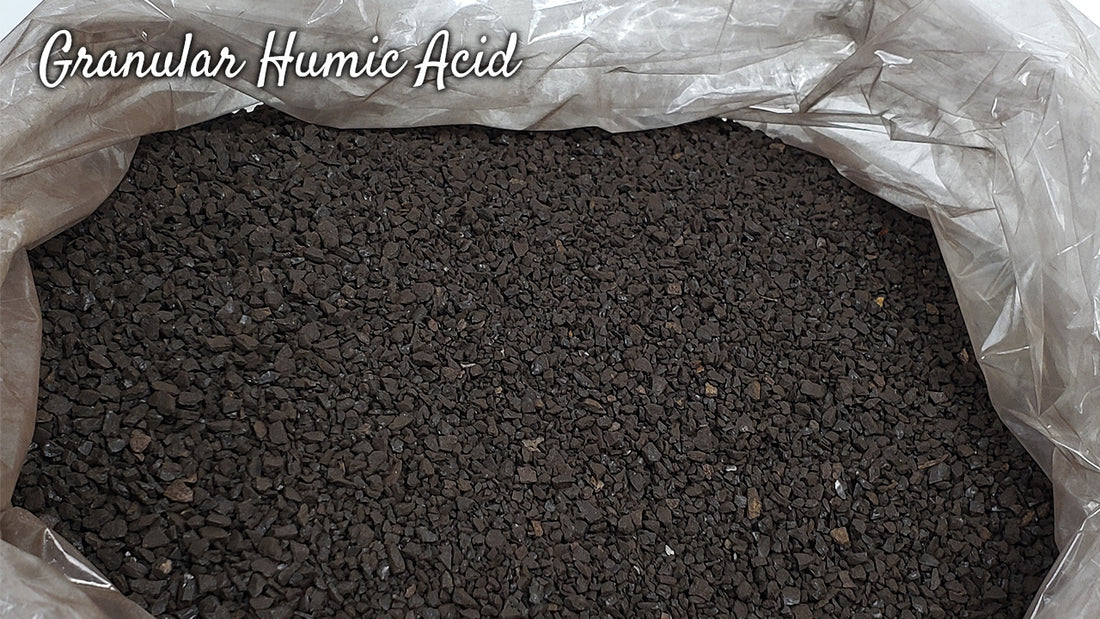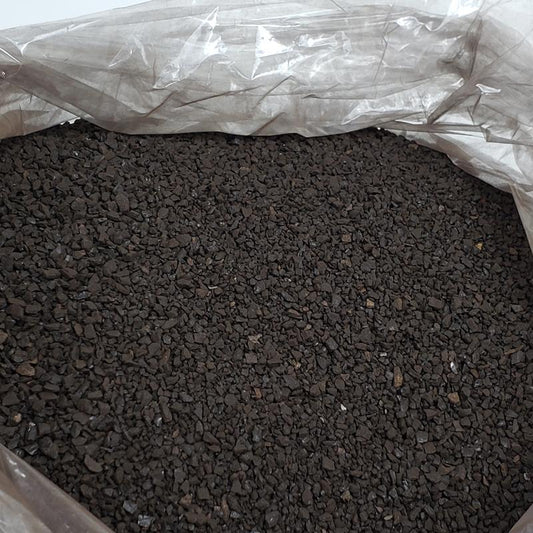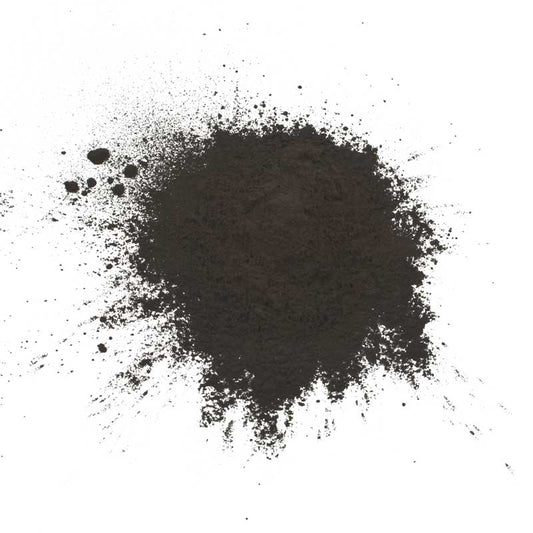Humates, humic acids, humus… these soil amendments sound so similar! They are all good for the garden even though they are not really a fertilizer (since they do not add any nutrients to the plants), and they are not all the same. Let’s look at what they are, and how to choose the best one for your needs.
Understanding Humus: The Carbon-Rich Matrix in Fertile Soils
Fertile soil is the lifeblood of agriculture and gardening, harboring a complex ecosystem of components that collaborate to sustain plant life and foster optimal growth. At the heart of this ecosystem lies a mysterious substance known as humus. Humus, often overlooked but crucial, plays a pivotal role in soil health and plant vitality.
The Essence of Humus
All fertile soil boasts a rich composition consisting of various elements, including decomposing organic matter, living organisms such as plant roots, microbes, worms, insects, and small animals. However, one of the most vital components is humus. Humus can be defined as the carbon-rich matrix derived from fully decomposed organic matter.
This enigmatic substance can be found not only in naturally occurring soils with decomposed organic matter but also in man-made environments like compost heaps, worm castings, sphagnum peat moss, and other aged organic materials. Its age and color are key indicators of its richness and effectiveness. The older and darker humus is, the more valuable it becomes in enhancing soil fertility and plant growth.
Composition of Humus
Humus is a complex blend of organic compounds, including lignins, fats, and sugars. However, its true power lies in three distinct types of chemical compounds known as "humic substances." These humic substances—humin, humic acids, and fulvic acids—are classes of chemicals composed of numerous biologically active compounds, each with its unique characteristics.
-
Humin: Among the three, humin is the most stable component of humus. It significantly contributes to improving soil structure, making it more conducive to plant growth. However, it is not easily utilized by plant roots, which makes it less influential in directly nourishing plants.
-
Fulvic Acids: In contrast, fulvic acids are the most bio-available of the humic substances. While they have little direct effect on soil structure, they play a crucial role in enhancing nutrient and water retention and uptake by plant roots. This makes fulvic acids a valuable asset for plant growth, as they facilitate the efficient absorption of essential elements.
-
Humic Acids: Humic acids strike a balance between stability and bio-availability. They can be applied to soil to provide numerous benefits over time. One of their most significant contributions is raising the Cation Exchange Capacity (CEC) of the soil, a pivotal parameter for nutrient and water retention and uptake. Scientific research supports the efficacy of humic acids in enhancing soil structure and promoting plant growth.
Scientific Evidence for Humic Acid Benefits
The application of humic acids to soil has been a subject of scientific inquiry for many years, with compelling evidence supporting their positive effects on soil and plant health. Here are some key findings from field studies and research:
1. Enhanced Soil Structure
Humic acids have a remarkable capacity to improve soil structure. They act as a binding agent, aggregating soil particles into stable granules. This enhances soil porosity, aeration, and water infiltration, ultimately creating an environment where plant roots can thrive.
2. Increased Cation Exchange Capacity (CEC)
The Cation Exchange Capacity (CEC) is a measure of a soil's ability to hold and exchange essential nutrients with plant roots. Humic acids substantially increase the CEC, ensuring that the soil can retain a greater quantity of nutrients. This is vital for plant growth, as it ensures a steady supply of essential elements.
3. Enhanced Nutrient and Water Uptake
Plants grown in soil treated with humic acids exhibit improved nutrient and water uptake. This phenomenon leads to healthier and more robust plants. Studies have shown that crops grown in humic-acid-enriched soil tend to have higher yields and better resistance to environmental stressors.
4. Stronger Roots and Bigger Plants
One of the most compelling outcomes of using humic acids in agriculture is the development of stronger roots and larger plants. Research demonstrates that plants grown in humic-rich soils exhibit more extensive root systems, which contribute to increased plant stability, resilience, and overall productivity.
5. Compatibility and Versatility
Contrary to the name, humic acids do not make the soil acidic. They can be safely used in any type of soil, making them versatile for various horticultural purposes. Whether you are growing vegetables, flowers, trees, or maintaining a lush lawn, humic acids can enhance the soil environment, promoting healthier plant growth.
Humus, often overshadowed by more prominent elements in fertile soil, is a fundamental component that holds the key to soil health and plant vitality. Its complex composition, comprising lignins, fats, sugars, and the three humic substances (humin, humic acids, and fulvic acids), makes it a powerful ally in agriculture and gardening.
Scientific research unequivocally supports the benefits of humic acids in enhancing soil structure, increasing Cation Exchange Capacity (CEC), and promoting the growth of stronger, healthier plants.
So Where do Humates Come into This Equation?
Humic acids are naturally a liquid. Humates, also called granular humic acids (Activate 80), are what you get when humic acids are rendered into a solid, through what is essentially a dehydration process. Humates contain the same compounds and thus have the same benefits as applying liquid humic acids such as Humax. Once applied to the soil and watered in, they will dissolve into their active liquid form again. The best way to add humic acids to your soil is with humates derived from leonardite shale. Leonardite is a rock formed from pressurized peat, which has a very high humic acid content–45 to 50%! Humax, which is also derived from leonardite, is a faster acting humic acid source, but has been diluted to 12% humic acids. It is best for foliar and fertigation applications.
Adding Humic Acid to the Garden-Forms
- Granular Humic Acids–Derived from Leonardite shale, contains 50% humic acids. Similar to Activate 80-Course, but in a smaller size.
- Acivate 80-Course Grade Humate–Derived from Leonardite shale, contains 45% humic acids.
- Activate 80 Micronized Humate–Derived from Leonardite shale, contains 55% humic acids. Can be delivered through irrigation lines. Does not fully go into solution, must keep agitated.
- Humax–Derived from Leonardite shale, contains 12% humic acids. Liquid humic acid, fully water soluble.
Application of Humate
To get the benefits of humic acids in your garden, only a little humate is required.- Use 1 to 2 pounds per 100 square feet of garden, or 3 to 10 pounds per 1000 square feet of lawn. Top dress or mix into the root zone, and water well.
- For potted plants, use 2 Tablespoons per cubic foot of potting mix, or water in by mixing 2 teaspoons per gallon every six to eight weeks.
- If you’re using liquid humic acids, apply 1 to 2 quarts of Humax per acre, diluted with at least 30 gallons of water for soil application or 6 gallons of water for foliar application. For the home gardener, 1 Tablespoon per gallon of water.
Adding "Whole" Humus to the Garden
Humic acids can also be applied to your garden by adding “whole” humus. Earthworm castings, compost, and sphagnum moss all contain some humus. Applying humus provides a much lower percentage of humic acids than using leonardite-derived humates, humus does have additional advantages such as providing organic matter, beneficial microbes, and even better water retention than humates. Humates, humic acids, and humus are all great choices at planting time. Just don’t get them mixed up with hummus, which your veggies are dipped in after harvest! Help your garden with humic acids, and grow organic for life!
Additional Information
-
Soil Quality Information - Penn State Extension: This article discusses the importance of Soil Organic Matter (SOM) in enhancing soil properties. It highlights how humus, a stable form of SOM, improves soil's nutrient and water-holding capacities, structure, and fertility. It also covers managing soil compaction and water-holding capacity through the addition of organic matter like compost or crop residues. Penn State University.
-
Making and Using Compost - MU Extension: This guide provides a comprehensive look at composting, including the layering technique for building compost piles. It emphasizes the importance of balancing carbon and nitrogen materials and managing moisture levels. The guide also explains the role of compost in contributing to soil humus and enhancing garden soil. University of Missouri.
-
Choosing a Soil Amendment - Colorado State University Extension: This article explores various soil amendments, including the use of sphagnum peat and composted manure. It emphasizes the role of these amendments in improving soil's physical properties and discusses factors like soil texture, salinity, and amendment longevity that should be considered when selecting an amendment. Colorado State University.
-
Do the Rot Thing - Choosing and Using a Composting System - OSU Extension Service: This resource offers various methods for composting, from low-fuss techniques to more involved hot composting processes. It provides detailed steps for creating compost piles and the conditions necessary for transforming organic waste into humus, which is beneficial for garden soil. Oregon State University.




11 comments
Sharon, the frequency of application will really depend on the form of humic acid/humates that you use. The granular or course grade humate can be applied to the planting hole. If you are using the liquid or watering in the micronized (mix with water), then you can apply about every 6-8 weeks. Follow the application instructions on the product label. Your garden will also benefit from adding compost or arctic humus to the soil.
How often should Humacid be applied?
Carol, you can apply humic acid (according to the label) a couple of times a year, probably best during the active growing season, spring and again in late summer.
How often should I apply humic acid to my peach tree. I have clay soil.
Question
When and how much would I apply it to
1) new grapevines going into the ground
2) existing grapevines